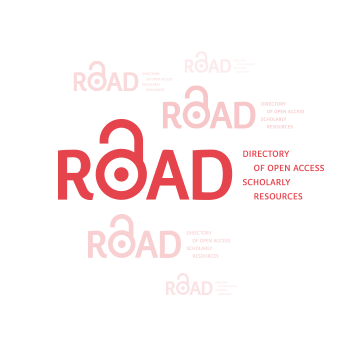Explorando el Impacto del Conflicto Escolar en la Prevalencia de la Violencia en los Entornos Educativos Colombianos
Resumen
Este artículo surge de una revisión de investigaciones y literatura sobre el tema de los conflictos y la violencia en los entornos escolares; para brindar una comprensión integral del conflicto y la violencia en los entornos educativos, destacando los tipos de conflictos que ocurren en los entornos escolares y cómo estos conflictos influyen directamente. la incidencia de la violencia en Colombia, y menciona el papel de los maestros, directivos y padres en la mitigación de esta violencia, el rendimiento académico de los estudiantes expuestos al conflicto y algunas direcciones para futuras investigaciones sobre cómo abordar la violencia y el conflicto en las escuelas colombianas.
Descargas
Citas
Aguilar, P., & Retamal, G. (2009). Protective environments and quality education in humanitarian contexts. International Journal of Educational Development, 29(1), 3-16. https://doi.org/10.1016/j.ijedudev.2008.02.002Get rights and content
Arias-López, B. E. (2013). Care and social suffering: nursing within contexts of political violence. Investigación y Educación en Enfermería, 31(1), 125-132.
Banerjee, M., Rowley, S. J., & Johnson, D. J. (2015). Community violence and racial socialization: Their influence on the psychosocial well-being of African American college students. Journal of Black Psychology, 41(4), 358-383. https://doi.org/10.1177/0095798414539174
Bolaño-Truyol, J., Charris-Angulo, F., Conde-Hernández, M., Fruto-Silva, E., Guzman-Valeta, A., Martinez-Palacio, U., ... & Rico-Ballesteros, R. (2023). School Climate: A Panoramic View Of The Colombian Territory From The Educational Coexistence Observatory At La Casa Del Maestro. Journal of Namibian Studies: History Politics Culture, 33, 458-477. https://doi.org/10.59670/jns.v33i.1781
Bravo-Sanzana, M., Bangdiwala, S. I., & Miranda, R. (2022). School violence negative effect on student academic performance: a multilevel analysis. International journal of injury control and safety promotion, 29(1), 29-41. https://doi.org/10.1080/17457300.2021.1994615
Burdick-Will, J. (2013). School violent crime and academic achievement in Chicago. Sociology of education, 86(4), 343-361. https://doi.org/10.1177/0038040713494225
Buvinic, M., Das Gupta, M., Casabonne, U., & Verwimp, P. (2013). Violent conflict and gender inequality: An overview. The World Bank Research Observer, 28(1), 110-138. https://doi.org/10.1093/wbro/lks011
Callahan, M. R., Tolman, R. M., & Saunders, D. G. (2003). Adolescent dating violence victimization and psychological well-being. Journal of adolescent research, 18(6), 664-681. https://doi.org/10.1177/074355840325478
CEPAL, N. (2023). Social Panorama of Latin America and the Caribbean, 2022. Executive summary: accessible format.
Clayton, C. J., Ballif-Spanvill, B., & Hunsaker, M. D. (2001). Preventing violence and teaching peace: A review of promising and effective antiviolence, conflict-resolution, and peace programs for elementary school children. Applied and Preventive Psychology, 10(1), 1-35. https://doi.org/10.1016/S0962-1849(05)80030-7
Contreras, C. P. A., Cardoso, R. D. C. V., da Silva, L. N. N., & Cuello, R. E. G. (2020). Street Food, Food Safety, and Regulation: What is the Panorama in Colombia?: A Review. Journal of Food Protection, 83(8), 1345-1358. https://doi.org/10.4315/JFP-19-526
Corredor, J., Wills-Obregon, M. E., & Asensio-Brouard, M. (2018). Historical memory education for peace and justice: definition of a field. Journal of Peace Education, 15(2), 169-190. https://doi.org/10.1080/17400201.2018.1463208
De Cordova, F., Berlanda, S., Pedrazza, M., & Fraizzoli, M. (2019). Violence at school and the well-being of teachers. The importance of positive relationships. Frontiers in psychology, 10, 1807. https://doi.org/10.3389/fpsyg.2019.01807
Eckman, E. W. (2002). Women high school principals: Perspectives on role conflict, role commitment, and job satisfaction. Journal of School Leadership, 12(1), 57-77. https://doi.org/10.1177/105268460201200103
Eckman, E. W., & Kelber, S. T. (2010). Female traditional principals and co-principals: Experiences of role conflict and job satisfaction. Journal of Educational Change, 11, 205-219.
Furlong, M. J., Chung, A., Bates, M., & Morrison, R. L. (1995). Who are the victims of school violence? A comparison of student non-victims and multi-victims. Education and Treatment of Children, 282-298.
Galand, B., Lecocq, C., & Philippot, P. (2007). School violence and teacher professional disengagement. British Journal of Educational Psychology, 77(2), 465-477. https://doi.org/10.1348/000709906X114571
Garcia, J., & Slunge, D. (2015). Environment and climate change management: Perspectives for post conflict-Colombia.
Garner, P. (2014). Dimensions of school-based violence to and by children: An overview of recent literature. International Journal of Adolescence and Youth, 19(4), 484-495. https://doi.org/10.1080/02673843.2012.751043
Gutiérrez, D. E. (2012). Environmental Thought in Argentina: A Panoramic View. Environmental Ethics, 34(4), 399-410. https://doi.org/10.5840/enviroethics201234439
Harber, C., & Harber, C. (2019). A (Partial) Post-conflict Educational Success Story? Colombia. Schooling for Peaceful Development in Post-Conflict Societies: Education for Transformation?, 73-90.
Hendricks, E. A. (2019). The effects of the exposure to violence in schools on the psychological well-being of learners in the Sarah Baartman District Municipality, Eastern Cape. African Journal of social work, 9(2), 1-9.
Henze, R., Katz, A., & Norte, E. (2000). Rethinking the concept of racial or ethnic conflict in schools: A leadership perspective. Race Ethnicity and Education, 3(2), 195-206. https://doi.org/10.1080/13613320050074032
Jewkes, R., Jama-Shai, N., & Sikweyiya, Y. (2017). Enduring impact of conflict on mental health and gender-based violence perpetration in Bougainville, Papua New Guinea: a cross-sectional study. Plos one, https://doi.org/10.1371/journal.pone.0186062
Juvonen, J. (2001). School violence: Prevalence, fears, and prevention.
Kalagbor, L. D., & Nnokam, N. C. (2015). Principals' and Teachers' Use of Conflict Management Strategies on Secondary Students' Conflict Resolution in Rivers State-Nigeria. Journal of Education and Practice, 6(13), 148-153.
Khoury-Kassabri, M. (2019). School violence is a major subject of concern for students, parents, school staff, and the general public, especially because of its adverse impact on students’ physical and emotional well-being and academic performance. Mental Health and Palestinian Citizens in Israel, 278.
Kim, Y. K., Sanders, J. E., Makubuya, T., & Yu, M. (2020, October). Risk factors of academic performance: Experiences of school violence, school safety concerns, and depression by gender. In Child & Youth Care Forum (Vol. 49, pp. 725-742). Springer US.
Loder, T. L., & Spillane, J. P. (2005). Is a principal still a teacher?: US women administrators’ accounts of role conflict and role discontinuity. School Leadership & Management, 25(3), 263-279. https://doi.org/10.1080/13634230500116348
Mateu‐Gelabert, P., & Lune, H. (2003). School violence: The bidirectional conflict flow between neighborhood and school. City & Community, 2(4), 353-369. https://doi.org/10.1046/j.1535-6841.2003.00060.x
McAloney, K., McCrystal, P., Percy, A., & McCartan, C. (2009). Damaged youth: prevalence of community violence exposure and implications for adolescent well‐being in post‐conflict Northern Ireland. Journal of Community Psychology, 37(5), 635-648. https://doi.org/10.1002/jcop.20322
Medina, L. G. (2023). Social and Emotional Learning in Colombian Schools: Assessing Teachers' Knowledge and Practices (Doctoral dissertation, University of Missouri-Columbia).
Milam, A. J., Furr-Holden, C. D. M., & Leaf, P. J. (2010). Perceived school and neighborhood safety, neighborhood violence and academic achievement in urban school children. The Urban Review, 42, 458-467.
Miller, G. E. (1994). School violence miniseries: Impressions and implications. School psychology review, 23(2), 257-261. https://doi.org/10.1080/02796015.1994.12085710
Nicolini, D., Powell, J., & Korica, M. (2014). Conclusions, implications of the study and directions for future research. In Keeping knowledgeable: how NHS chief executive officers mobilise knowledge and information in their daily work. NIHR Journals Library.
Osofsky, J. D. (1997). The effects of exposure to violence on young children. Carnegie Corporation of New York Task Force on the Needs of Young Children; An earlier version of this article was presented as a position paper for the aforementioned corporation. https://doi.org/10.1037/10254-050
Patton, D. U., Woolley, M. E., & Hong, J. S. (2012). Exposure to violence, student fear, and low academic achievement: African American males in the critical transition to high school. Children and Youth Services Review, 34(2), 388-395. https://doi.org/10.1016/j.childyouth.2011.11.009
Peguero, A. A. (2009). Opportunity, involvement, and student exposure to school violence. Youth Violence and Juvenile Justice, 7(4), 299-312. https://doi.org/10.1177/1541204008330634
Pottinger, A. M., & Stair, A. G. (2009). Bullying of students by teachers and peers and its effect on the psychological well-being of students in Jamaican schools. Journal of school violence, 8(4), 312-327. https://doi.org/10.1080/15388220903130155
Ramos, R., Duque, J. C., & Nieto, S. (2012). Decomposing the rural-urban differential in student achievement in Colombia using PISA microdata. http://dx.doi.org/10.2139/ssrn.2051358
Sánchez‐Obando, J. W., & Duque‐Méndez, N. D. (2023). Augmented reality strategy as a didactic alternative in rural public schools in Colombia. Computer Applications in Engineering Education, 31(3), 552-573. https://doi.org/10.1002/cae.22598
Svetaz, M. V., Ireland, M., & Blum, R. (2000). Adolescents with learning disabilities: Risk and protective factors associated with emotional well-being: Findings from the National Longitudinal Study of Adolescent Health. Journal of adolescent health, 27(5), 340-348. https://doi.org/10.1016/S1054-139X(00)00170-1
Vega, L., & Bajaj, M. (2018). The right to education in protracted conflict: teachers’ experiences in non-formal education in Colombia. In Education, Conflict, and Globalisation (pp. 32-47). Routledge.
Walker, S. (2004). Prevention of school desertion in Colombia. International Journal on School Disaffection, 2(1).
Warner, B. S., Weist, M. D., & Krulak, A. (1999). Risk factors for school violence. Urban education, 34(1), 52-68. https://doi.org/10.1177/0042085999341004
Winslade, J., & Williams, M. (2011). Safe and peaceful schools: Addressing conflict and eliminating violence. Corwin Press.
Young, B. L., Madsen, J., & Young, M. A. (2010). Implementing diversity plans: Principals’ perception of their ability to address diversity in their schools. NASSP Bulletin, 94(2), 135-157. https://doi.org/10.1177/0192636510379901
Derechos de autor 2023 Jonathan Posada González

Esta obra está bajo licencia internacional Creative Commons Reconocimiento 4.0.












.png)




















.png)
1.png)


